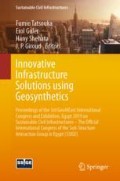Abstract
The C.W. “Bill” Young Regional Reservoir in USA, owned and operated by Tampa Bay Water, holds 58,673,855 m3 of raw water and is a vital resource for 2.4 million residents of Tampa Bay area. During the wet season, water from surrounding rivers is stored for withdrawals during the dry season - greatly reducing the dependence on Florida’s waning groundwater. The reservoir is formed by an approximately 8 km long earthen ring dam of 15 m average height. The reservoir started operation in 2005. Unusual cracking of the reservoir’s upstream soil-cement erosion protection system was observed about one year after the first fill. The reservoir was taken offline in 2012 to prepare for the renovation of the upstream slope. The designer, Gannett Fleming, after subsurface investigations and an extensive design process, selected an upstream solution with a 50-year design life. The rehabilitation included removing the original high-density polyethylene liner, replacing it with a polyvinylchloride liner, and constructing a robust soil-cement erosion protection system placed on a gravel drainage. The selected liner, SIBELON® 2CNT 3300, is a 2 mm thick geomembrane with a geotextile layer heat-bonded on both sides of the geomembrane. The geotextile layer provides the required friction angle with the earthen embankment below and the gravel drainage layer above. Overlying the liner, the soil-cement was designed to provide a minimum of 50 years of erosion protection. The renovation started in February 2013 and the reservoir was placed back into operation by the end of 2014. Over the following years the reservoir has been frequently monitored for dam safety. This paper explores aspects of the design and construction of the renovation features, and presents the dam safety monitoring findings to date, including piezometric water levels in the soil-cement erosion protection system and the seepage flow observed surrounding the reservoir.
Access this chapter
Tax calculation will be finalised at checkout
Purchases are for personal use only
References
ICOLD, International commission on Large Dams: Bulletin 135, Geomembrane Sealing Systems for Dams – Design principles and review of experience. ICOLD, Paris (2010)
Scuero, A., Vaschetti, G.: Rehabilitation of Dams with Watertight Geomembranes, in the Dry and Underwater. GeoMEast 2017 International Congress (2018)
Author information
Authors and Affiliations
Corresponding author
Editor information
Editors and Affiliations
Rights and permissions
Copyright information
© 2020 Springer Nature Switzerland AG
About this paper
Cite this paper
Scuero, A., Vaschetti, G., Wilkes, J. (2020). A Geomembrane Liner to Stop Water Seepage in an 8 km Long Embankment: The Bill Young Reservoir Case History. In: Tatsouka, F., Guler, E., Shehata, H., Giroud, J. (eds) Innovative Infrastructure Solutions using Geosynthetics. GeoMEast 2019. Sustainable Civil Infrastructures. Springer, Cham. https://doi.org/10.1007/978-3-030-34242-5_7
Download citation
DOI: https://doi.org/10.1007/978-3-030-34242-5_7
Published:
Publisher Name: Springer, Cham
Print ISBN: 978-3-030-34241-8
Online ISBN: 978-3-030-34242-5
eBook Packages: Earth and Environmental ScienceEarth and Environmental Science (R0)

